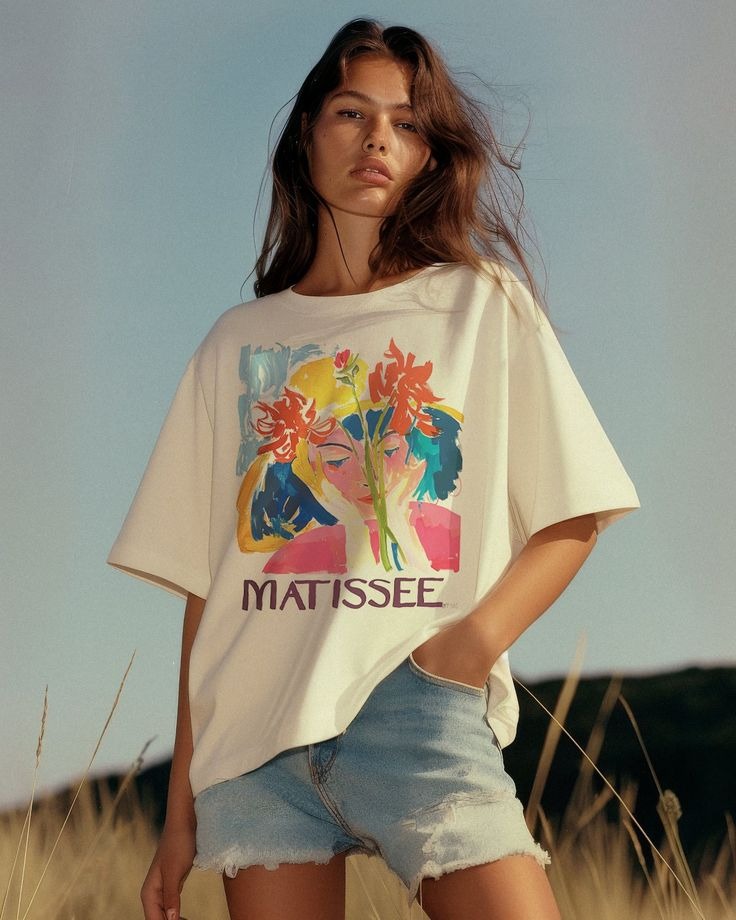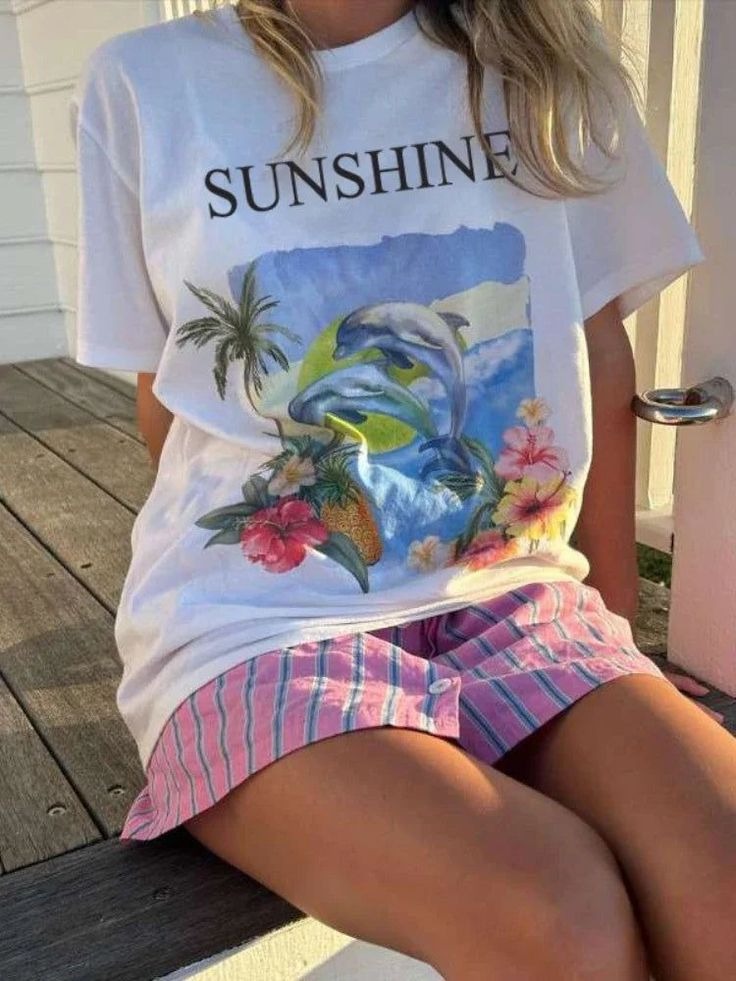Introduction
Few garments encapsulate the interplay between comfort, identity, and innovation as completely as the humble t-shirt. What began as a simple pull-over underlayer has, over the course of more than a century, evolved into a global canvas of expression and a bellwether for shifting paradigms in culture, technology, and ethics. Its basic form—a knit torso, short sleeves, and a soft neckline—remains unchanged, yet its meanings and manifestations have multiplied beyond imagination. In this expansive treatise, we deepen our exploration of the t-shirt’s odyssey: mining untold nuances of its industrial origins, tracing its metamorphosis through wartime exigencies, surveying the vast terrain of graphic and artisanal innovation, and forecasting the smart, circular, and virtual frontiers that await.
I. Proto-Tails: Labor, Knit Machinery, and the Birth of a Garment
The origins of the t-shirt are inseparable from the crucible of the Industrial Revolution. As factories in 1880s Lancashire and New England soared in output, workers labored beneath layers of stiff cotton and wool, suffering heat, friction, and fatigue. Ingenious machinists and tailors responded by adapting the soft cotton jersey—already prized for undergarments—into pull-over shirts without collars or wrists. These early prototypes eliminated chafing plackets and thick seams, offering a second-skin comfort. Key to their emergence was the circular knitting machine, invented in the late nineteenth century, which spun yarn into endless tubes of fabric. Mercerization—a chemical process developed by John Mercer in 1844—further enhanced cotton’s luster and dye affinity, laying the technical groundwork for jerseys that could withstand repeated washings and take on vibrant hues. Yet for decades these shirts remained hidden beneath outer layers, their potential as standalone apparel untapped.
II. Uniform to Populace: Wartime Adoption and the Rise of the Civilian T-Shirt
World War I proved the first crucible in which the t-shirt transcended its undergarment status. Naval commanders, contending with the heat and humidity of Pacific and Caribbean stations, issued short-sleeved cotton undershirts as an alternative to wool tunics. The jersey’s rapid drying and breathability made it indispensable aboard steamships and submarines alike. On European fronts, tank crews and fighter pilots embraced custom-dyed cotton-rayon blends to wick sweat under heavy flak jackets and leather gear. When the armistice arrived in November 1918, thousands of veterans brought their undershirts home, wearing them beneath civilian clothing for comfort. The postwar flood of military surplus undershirts—offered at nominal prices—introduced the wider public to a garment once confined to necessity, not style.
World War II accelerated the t-shirt’s civilian assimilation. Governments in the United States, United Kingdom, Germany, and Japan standardized cotton and cotton-blend undershirt production to meet wartime demands. Factories ran around the clock, churning out millions of jerseys that, by war’s end in 1945, found their way into civilian wardrobes through discounted relief sales and aid programs. No longer merely a laborer’s or soldier’s underlayer, the t-shirt emerged as comfortable everyday wear for homemakers, youth, and entrepreneurs forging a world eager to rebuild and reinvent.
III. From Blank Canvas to Graphic Vanguard: The Media Revolution
The economic prosperity of the 1950s and 1960s unlocked the t-shirt’s potential as a medium of mass communication. Blank white shirts became walking billboards for local Coca-Cola franchises, small-town baseball teams, and civic organizations. Screen-print shops sprouted in urban enclaves, equipping students and small businesses with stencils and squeegees to transfer slogans and logos onto cotton jerseys. By the late 1960s, political movements had seized upon the t-shirt’s mobility. Hand-screened messages like “Make Love, Not War,” “Votes for Women,” and “Earth First” adorned countless marches and teach-ins, transforming wearers into visible ambassadors of causes both global and local.
Concurrently, music culture amplified the graphic revolution. Bands ranging from The Beatles to Pink Floyd to The Grateful Dead commissioned tour shirts bearing album art, concert dates, and psychedelic typography. These garments functioned as memorabilia and identity badges, enabling fans to project membership within ever-expanding subcultures. Designers applied experimental printing techniques—tie-dye for hypnotic gradients, discharge inks for vintage washes, and oil-based plastisol for resilient, glossy finishes—pushing the boundaries of what could adhere to cotton knit. By the 1980s and ’90s, graphic tees had become central to streetwear, with hip-hop crews emblazoning logos of FUBU, Karl Kani, and Tommy Hilfiger as markers of urban identity and status.
IV. Artisan Revival and the Global Workshop
While mass production propelled the t-shirt into ubiquity, artisan movements recognized its value as a handcrafted canvas. In San Francisco’s Mission District and London’s Shoreditch, independent studios revived discharge printing—using chemicals to strip dye from cotton and reveal negative-space imagery. Japanese mingei artisans applied sashiko stitching and katazome stencil resist to knit panels, merging centuries-old traditions with contemporary cuts. In West Africa’s Lagos markets, entrepreneurs repurposed vibrant wax prints into patchwork t-shirt designs, celebrating local motifs on globalized garments. South Asia’s block-printing villages in Rajasthan and Gujarat adapted wooden blocks and hand-mixed vats of natural indigo to hand-stamp neutral-dyed tees with paisley, elephant, and folk-dance motifs. Each regional workshop redefined the t-shirt as a locus for cultural heritage and sustainable livelihoods, even as large factories dominated global supply chains.
V. The Science Beneath the Surface: Fibers, Fabrication, and Seamless Futures
Beneath every t-shirt lies an interplay of fiber science and engineering. Traditional combed cotton, prized for its long staple length, yields yarns with fewer impurities, while pima and supima cultivars offer extra-long staple fibers prized for their strength and silkiness. Blended yarns incorporate lyocell (a regenerated cellulose from wood pulp), modal (another high-wet-strength rayon), bamboo viscose, and recycled polyester—each contributing moisture-wicking, antimicrobial, and performance properties. Circular knitting machines, once limited to basic jersey, now produce tubular and seamless constructions that conform to body contours with minimal waste.
On the printing front, digital direct-to-garment (DTG) printers have democratized photo-realistic imagery, capable of infinite color blends and fine gradations without minimum-order constraints. Water-based and low-impact pigment inks reduce effluent toxicity, while enzyme-pretreated knits allow finer droplet absorption and wash-fastness. Laser cutting and ultrasonic bonding techniques, borrowed from aerospace and medical textiles, create clean, heat-sealed hems and openings without thread—minimizing microplastic shedding and improving durability. Emerging nanotechnologies embed microscopic sensors within yarns, presaging interactive garments that respond to environmental stimuli or wearer biometrics.
VI. Economic Engines: Supply Chains, Market Forces, and the New Retail
The scale of global t-shirt production is staggering: an estimated 7 billion units annually, representing a market nearing one hundred billion U.S. dollars. Manufacturing hubs in Bangladesh, Vietnam, Turkey, and Honduras coordinate the flow of raw cotton through spinning, knitting, dyeing, cutting, sewing, and packaging, with lead times measured in weeks rather than months. Fast-fashion conglomerates compress design-to-shelf cycles through vertical integration, just-in-time logistics, and data-driven demand forecasting. Simultaneously, direct-to-consumer startups leverage print-on-demand services and digital storefronts to offer hyper-personalized graphics at competitive prices.
E-commerce and social media amplify both access and competition. Limited “drops” and influencer collaborations generate hype akin to sneaker culture, sending resale prices of collectible tees into the hundreds or thousands of dollars. Meanwhile, flash-sale platforms liquidate overstock at steep discounts, reinforcing a culture of disposability even as sustainable brands advocate mindful consumption. Macro-trends—such as near-shoring to Mexico and Eastern Europe—seek to mitigate tariff risks and responsiveness gaps, yet must balance labor cost advantages in Asia and latent infrastructure challenges near Western markets.
VII. Reckoning with Impact: Ethics, Ecology, and the Circular Imperative
As the world reckons with climate change and social justice, the t-shirt’s ubiquity casts a long environmental and ethical shadow. Conventional cotton cultivation consumes upwards of 2,700 liters of water per kilogram of fiber and relies on chemical pesticide applications that imperil ecosystems and farmworker health. Dyehouses discharge unfettered effluent—laden with heavy metals and surfactants—into rivers, while textile finishing processes release microfibers that infiltrate waterways. On the consumer end, an average t-shirt is worn fewer than twenty times before disposal, contributing to massive textile waste flows that landfill or incinerate.
In response, regenerative cotton initiatives—rotating cotton fields with cover crops and embracing organic seed and soil-building practices—seek to restore soil carbon and biodiversity. Closed-loop water systems and zero-liquid discharge facilities aim to recycle dye-bath effluent, though high capital costs and energy demands pose scaling challenges. Brands pursue certifications—Fair Trade, Global Organic Textile Standard (GOTS), and the Better Cotton Initiative—to validate labor and environmental practices, but these cover only a fraction of global production. Circular business models advocate take-back programs, mechanical and chemical recycling of post-consumer shirts, and resale or rental platforms that extend garment lifespans. However, chemical recycling processes remain energy-intensive, and consumer behavior change is necessary to close the loop.
VIII. Democratized Design: Customization, Co-Creation, and the Maker Ethos
Even amid industrial giants, the t-shirt retains its essence as a tool for personal expression. Desktop DTG and dye-sublimation printers have empowered home entrepreneurs and micro-brands to produce low-volume, full-color shirts on demand. Local makerspaces host workshops teaching screen-printing, discharge techniques, and specialty inks, fostering collaborative creative communities. Online configurators and augmented-reality preview apps enable customers to prototype designs in real time—rotating, scaling, and recoloring graphics before committing to a print order. For grassroots campaigns—charity fundraisers, school teams, activist networks—the t-shirt remains the most accessible medium for rallying identities, raising awareness, and forging tangible solidarity.
IX. Psychology of the Tee: Identity, Enclothed Cognition, and Social Signaling
Psychologists have long studied the phenomenon of “enclothed cognition,” wherein garments influence wearer psychology and social perception. The t-shirt, juxtaposed directly against the skin, often feels more authentic and intimate than structured outerwear. A political or cause-oriented graphic can bolster wearer confidence and sense of purpose, while a branded corporate tee fosters employee solidarity and company pride. In protest movements, coordinated t-shirt colors and prints become powerful visual signifiers, projecting unity and amplifying messages to external audiences. Celebrity merchandise and influencer collaborations exploit parasocial bonds—fans don tees to signal allegiance and perceived closeness to public figures—thereby transforming clothing into a vehicle of both personal empowerment and communal belonging.
X. Virtual Wardrobes and the Metaverse: Digital Doubles of the T-Shirt
As social and commercial life extends into digital realms, the t-shirt has followed suit. Video-game avatars and virtual world residents don branded tees and fantasy-logo shirts, blending real and imagined identities. Fashion houses experiment with non-fungible tokens (NFTs) tied to exclusive digital wearables—sometimes coupled with physical drops—creating scarcity economies in cyberspace. Augmented-reality shopping experiences allow customers to “try on” virtual shirts via smartphone cameras, capturing shareable images and linking directly to purchase portals. Virtual pop-up boutiques in metaverse platforms host celebrity-led charity drops and avatar fashion shows, replicating the hype cycles of streetwear in pixelated environs. Blockchain–enabled provenance systems aim to trace every stitch and dye lot, embedding tamper-proof origin stories into digital ledgers that consumers can audit from seed to stitch.
XI. Smart Textiles and the Interactive Tee: Toward Responsive Apparel
The most dramatic transformation of the t-shirt may lie in smart textiles. Conductive fibers—silver-coated nylon, carbon nanotube-infused yarns, or liquid metal micro-filaments—can weave circuits capable of biometric sensing: heart rate, respiration, and muscle exertion transmitted via Bluetooth to smartphones or health platforms. Photochromic and thermochromic inks shift colors with UV exposure or temperature changes, turning wearers into living art installations. Integrated micro-haptic actuators could provide directional cues for navigation or discreet notifications. Labs worldwide pursue lab-grown cellulose fibers—cultivated in bioreactors—to replicate cotton’s hand feel without land use, while microfactory robotics and additive manufacturing systems promise hyper-local on-demand production, slashing transport emissions and obsolescence.
XII. Navigating Futures: Challenges, Collaborations, and the Way Ahead
Despite this horizon of innovation, formidable challenges remain. Ensuring data privacy and security in sensor-laden garments demands new standards, encryption protocols, and perhaps regulatory oversight akin to medical devices. Scaling regenerative agriculture and closed-loop manufacturing will require public-private partnerships, blended finance, and incentives that internalize environmental costs currently externalized in global markets. Cultivating a shift from disposability to durability hinges on consumer education, transparency in labeling, and economic models—such as deposit-return schemes or subscription-based access—to reward longevity. Brands, artisans, technologists, and policymakers must collaborate across silos to reimagine the t-shirt as both an ethical product and a living platform for community, creativity, and conscience.
Conclusion
From its clandestine origins as a hidden undergarment to its current reign as a global canvas for art, activism, and technology, the t-shirt continues to transcend boundaries. It is at once the simplest of garments and the most complex of symbols—a testament to human adaptability, innovation, and the enduring desire to express selfhood. As we embark on new frontiers of sustainable materials, smart interfaces, and digital avatars, the t-shirt stands ready to chart every twist and turn of our collective journey. In every fiber, print, and line of code, it tells a story of our past and projects the contours of futures yet unwritten—an infinite palette upon which we paint the ever-evolving portrait of human aspiration




Leave a comment